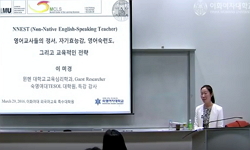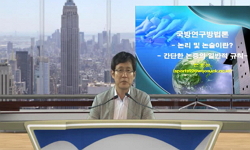Self-efficacy in the context of learning has been steadily emphasized as an indicator of students' learning motivation and performance. However, little is known about university students'self-efficacy in the context of physics learning. This study des...
http://chineseinput.net/에서 pinyin(병음)방식으로 중국어를 변환할 수 있습니다.
변환된 중국어를 복사하여 사용하시면 됩니다.
- 中文 을 입력하시려면 zhongwen을 입력하시고 space를누르시면됩니다.
- 北京 을 입력하시려면 beijing을 입력하시고 space를 누르시면 됩니다.
https://www.riss.kr/link?id=A104319803
- 저자
- 발행기관
- 학술지명
- 권호사항
-
발행연도
2013
-
작성언어
Korean
- 주제어
-
등재정보
KCI등재,SCOPUS
-
자료형태
학술저널
- 발행기관 URL
-
수록면
423-431(9쪽)
-
KCI 피인용횟수
3
- 제공처
-
0
상세조회 -
0
다운로드
부가정보
다국어 초록 (Multilingual Abstract)
Self-efficacy in the context of learning has been steadily emphasized as an indicator of students' learning motivation and performance. However, little is known about university students'self-efficacy in the context of physics learning. This study described the process of developing and validating a measurement tool to assess students' beliefs in their abilities to perform essential tasks in physics and then investigated university students' self-efficacy about physics learning. Based on a literature review, a prelimiliary self-efficacy scale with 21Likert-style items was suggested, and 330 university students'responses were analyzed to validate the survey tool. Based on the result of an exploratory factor analysis, we developed a modified survey with 17 items and 2 dimensions, `learning' and `practice' and we validated the modified model by using a covariance structural analysis. The descriptive result of the investigation showed that university students have low or unfavorable self-efficacy in learning physics as the average value of the self-efficacy was 3.93point on a 9-scale Likert-style questionnaire and that students had lower self-efficacies in the `practice' dimension than in the `learning' dimension. Also, female students and non-physics major students showed relatively lower self-efficacy compared to male and physics major students.
국문 초록 (Abstract)
학습 상황에서의 자기효능감은 학습 동기와 성취의 강력한 예언자로서꾸준히 강조되어왔다. 그러나 대학생의 물리 학습에 대한 자기효능감연구는 부족한 실정이다. 이 연구에서는 물리학...
학습 상황에서의 자기효능감은 학습 동기와 성취의 강력한 예언자로서꾸준히 강조되어왔다. 그러나 대학생의 물리 학습에 대한 자기효능감연구는 부족한 실정이다. 이 연구에서는 물리학을 학습할 때 필수적인과제 수행하는 능력에 대한 대학생들의 자기효능감 신념을 평가할 수있는 척도를 개발하고 그 타당성을 확인하는 과정을 기술하였으며, 이를통해 대학생들의 물리 학습에 대한 자기효능감을 조사하였다. 문헌연구를통해 물리 자기효능감 척도를 총 21개 문항의 9단계 리커트형 문항으로구성하여 총 330명의 대학생들을 대상으로 적용하여 응답 결과를분석하였다. 수집한 자료로부터 탐색적 요인 분석 결과 17개 문항이 학습차원과 실천 차원 등 총 2개의 하위 차원으로 나뉘어짐을 알 수있었으며, 공변량 구조분석을 통하여 새로운 물리 자기효능감 척도의신뢰도와 타당성을 확인하였다. 응답 결과에서 드러난 물리 자기효능감분포를 조사한 결과, 전체 평균이 9점 만점에 3.95점으로 물리학을학습하는 대학생들의 자기효능감은 대체로 부정적이었으며, 학습 차원에비해 실천 차원에서 더 낮은 자기효능감을 보였다. 또한 응답자 변인별로 비교한 결과, 남학생에 비해 여학생이, 전공자에 비해 비전공자들이상대적으로 더 낮은 자기효능감을 나타냈다.
참고문헌 (Reference)
1 E. F. Redish, 66 : 212-, 1998
2 J. Baldwin, 83 : 397-, 1999
3 D. Hammer, 68 : S52-, 2000
4 L. Lising, 73 : 372-, 2005
5 E. Brewe, 5 : 013102-, 2009
6 P. M. Bentler, 88 : 588-, 1980
7 A. Bandura, 84 : 191-, 1977
8 S. I. Kim, 35 : 603-, 2004
9 A. Y. Kim, 39 : 95-, 2001
10 F. Pajares, 66 : 543-, 1996
1 E. F. Redish, 66 : 212-, 1998
2 J. Baldwin, 83 : 397-, 1999
3 D. Hammer, 68 : S52-, 2000
4 L. Lising, 73 : 372-, 2005
5 E. Brewe, 5 : 013102-, 2009
6 P. M. Bentler, 88 : 588-, 1980
7 A. Bandura, 84 : 191-, 1977
8 S. I. Kim, 35 : 603-, 2004
9 A. Y. Kim, 39 : 95-, 2001
10 F. Pajares, 66 : 543-, 1996
11 S. L. Britner, 7 : 271-, 2001
12 P. R. Pintrich, 82 : 33-, 1990
13 I. M. Riggs, 74 : 625-, 1990
14 Presidential Advisory Council for Science & Technology, 2002
15 E. Uzuntiryaki, 39 : 539-, 2009
16 S. Im, 57 : 381-, 1998
17 J. Dalgety, 40 : 649-, 2003
18 A. Elby, 67 : S52-, 1999
19 강영심, "특수교사의 교사효능감 수준 및 영향 요인 분석" 한국특수교육학회 40 (40): 305-320, 2005
20 전우수, "초등학생의 과학선호도" 한국초등과학교육학회 22 (22): 81-96, 2003
21 임성민, "장애학생 과학학습지도에 대한 예비과학교사들의 자기효능감" 과학교육연구소 35 (35): 13-22, 2011
22 김홍정, "비형식 과학교육환경에서 초등학생들의 과학 학습에 대한 흥미 분석" 한국초등과학교육학회 31 (31): 125-134, 2012
23 김성일, "개념도 유형과 과학교과 자기효능감이 흥미와 이해도에 미치는 효과: 4학년과 5학년의 비교" 한국교육심리학회 18 (18): 17-31, 2004
24 B. Tabachnick, "Using Multivariate Statistics" Allyn & Bacon 2007
25 Sungmin Im, "Secondary and university students' expectations on learning physics" 한국물리학회 44 (44): 217-4, 2004
26 R. B. Kline, "Principles and Practice of Structural Equation Modeling" Guildford 1998
27 S. Sjoberg, "Development and Dilemmas in Science Education" Falmer 1988
동일학술지(권/호) 다른 논문
-
KrF 엑시머 레이저를 이용한 실리콘 관통 비아 (TSV)의 수층 효과 연구
- 한국물리학회
- 김혜림
- 2013
- KCI등재,SCOPUS
-
국립 암 센터 치료용 가속기를 위한 빔라인의 광학계 연구
- 한국물리학회
- 황지광
- 2013
- KCI등재,SCOPUS
-
과학사 읽기 자료를 이용한 예비 과학교사들의 과학관 변화
- 한국물리학회
- 박순옥
- 2013
- KCI등재,SCOPUS
-
2009 개정 고등학교 물리 I 교육과정과 평가에 대한 현장 교사의 의견
- 한국물리학회
- 이재봉
- 2013
- KCI등재,SCOPUS
분석정보
인용정보 인용지수 설명보기
학술지 이력
| 연월일 | 이력구분 | 이력상세 | 등재구분 |
|---|---|---|---|
| 2023 | 평가예정 | 해외DB학술지평가 신청대상 (해외등재 학술지 평가) | |
| 2020-01-01 | 평가 | 등재학술지 유지 (해외등재 학술지 평가) |  |
| 2016-09-05 | 학술지명변경 | 외국어명 : Sae Mulli(New Physics) -> New Physics: Sae Mulli |  |
| 2015-01-01 | 평가 | 등재학술지 유지 (등재유지) |  |
| 2011-01-01 | 평가 | 등재학술지 유지 (등재유지) |  |
| 2009-01-01 | 평가 | 등재학술지 유지 (등재유지) |  |
| 2007-01-01 | 평가 | 등재학술지 유지 (등재유지) |  |
| 2004-01-01 | 평가 | 등재학술지 선정 (등재후보2차) |  |
| 2003-01-01 | 평가 | 등재후보 1차 PASS (등재후보1차) |  |
| 2002-01-01 | 평가 | 등재후보학술지 유지 (등재후보1차) |  |
| 1999-07-01 | 평가 | 등재후보학술지 선정 (신규평가) |  |
학술지 인용정보
| 기준연도 | WOS-KCI 통합IF(2년) | KCIF(2년) | KCIF(3년) |
|---|---|---|---|
| 2016 | 0.18 | 0.18 | 0.17 |
| KCIF(4년) | KCIF(5년) | 중심성지수(3년) | 즉시성지수 |
| 0.15 | 0.14 | 0.3 | 0.1 |





 KCI
KCI




